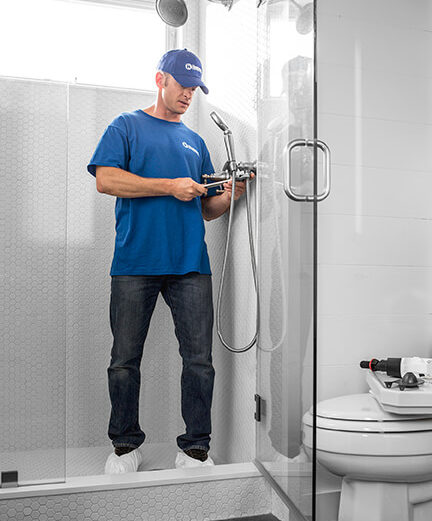We offer a wide range of services for that fresh look, or just maintenance or updates to keep your home functioning and safe. Regardless of the size of the job, we have a craftsman that can tackle it. We offer a wide range of services for that fresh look, or just maintenance or updates to keep your home functioning and safe. Regardless of the size of the job, we have a craftsman that can tackle it.

Carpentry / February 15, 2022

Hiring a carpenter in Brantford to make improvements to your home is a good opportunity to install a new style of window. Bow windows and bay windows are projection windows that jut out a bit from the exterior of your home. This changes your home’s exterior appearance, giving it a look that is more dimensional and textured. A bow or bay window also changes the home’s interior. In addition to letting in more light, it also adds a little more square footage to the floor area. The amount of square footage that you gain depends on the type and size of the window that you add.
Superficially, there are similarities between bow and bay windows, but there are also significant differences that set each apart. Knowing how to tell them apart can help you decide which you want for your home.
A bow window consists of a series of window panels of uniform size and shape. The panels are arranged into a curved shape, giving the effect of a semicircle or arc. It is the curving shape that gives them their name as it resembles a bow used in archery.
The number of panels in a bow window can range from four to six. Each panel can be either fixed and inoperable or it can be opened to allow for ventilation. A bow window can be installed in a wider space than a bay window and therefore lets in more light. However, it may not extend as far out from the exterior of the house.
A bay window consists of three panels, while a bow window requires at least four. The middle panel consists of a picture window that is fixed and inoperable. The side panels are typically smaller than the middle panel and form an angle to them. The degree of angulation can range from 45 degrees to 90 degrees. The side panels can be either fixed or operable.
A bay window extends out further from the house than a bow window. This can create a more dramatic contrast. It can also create more square footage inside the house.
Theoretically, either a bow window or a bay window can work on any type of home. However, a bow window is a more traditional look, so it is more likely to be used on a Victorian-style home or a classic cottage. A bay window gives a house a more modern look, so it may be more appropriate for contemporary-style homes or those with a transitional look.
Because a bow window consists of more panels, it can span a wider area than a bay window. Therefore, if you want the biggest area possible, you should probably choose a bow window. You should also choose a bow window if you want to let in as much light as possible, but if you want to create more space indoors, you should probably choose a bay window instead.
Though not exactly the same, bow windows and bay windows offer similar benefits. They both change a look of a room by letting in more light, and they both create a little extra floor space. Many people make use of this by installing a window bench or extra shelving underneath the window. Some combine both functions into one unit: storage space below with a bench on top.
It is really important to make sure windows are installed correctly the first time so that they don’t leak. Call Handyman Connection for carpentry needs as well as other repair services in Brantford.